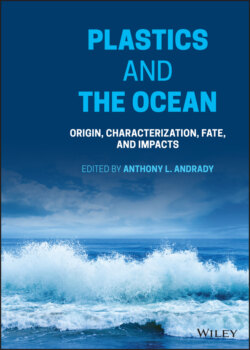Читать книгу Plastics and the Ocean - Группа авторов - Страница 55
2.4 Degradation of Plastic Additives in the Marine Environment
ОглавлениеLike their plastic counterparts, plastic additives are also susceptible to oxidative degradation and biodegradation. The final products from degradation of plastic additives and the kinetics of these processes in the ocean are not well understood. Basic understanding of the effects of UV, oxygen, water, pH, and temperature certainly allow scientists to predict potential degradation/transformation structures to some extent. The biological degradation pathways that can occur in marine environments remain, for the most part, a mystery.
With phthalates, biodegradation is likely the most important removal process from water (Net et al. 2015). Many phthalates biodegrade into less toxic metabolites, for instance DEP to MEP and phthalic acid (PA) in soils (Cartwright et al. 2000). Both aerobic or anaerobic microorganisms, including marine‐derived fungi, biodegrade phthalates, and higher order animals, also can rapidly biotransform phthalates (Net et al. 2015, Carstens et al. 2020). Paluselli et al. (2019) found that DnBP, DiDP, BzBP, and DEHP were >85% degraded within 49 days of incubation in aerobic seawater. In marine sediments, half‐lives of monoalkyl phthalate esters were between (18 ± 4 and 35 ± 10) hours (Otton et al. 2008). Phthalates can also degrade in the marine environment via photodegradation and hydrolysis of the ester moiety to PA and the corresponding alcohols via the monoesters. These processes, however, are recognized to be less important than biodegradation (Yan et al. 1995).
